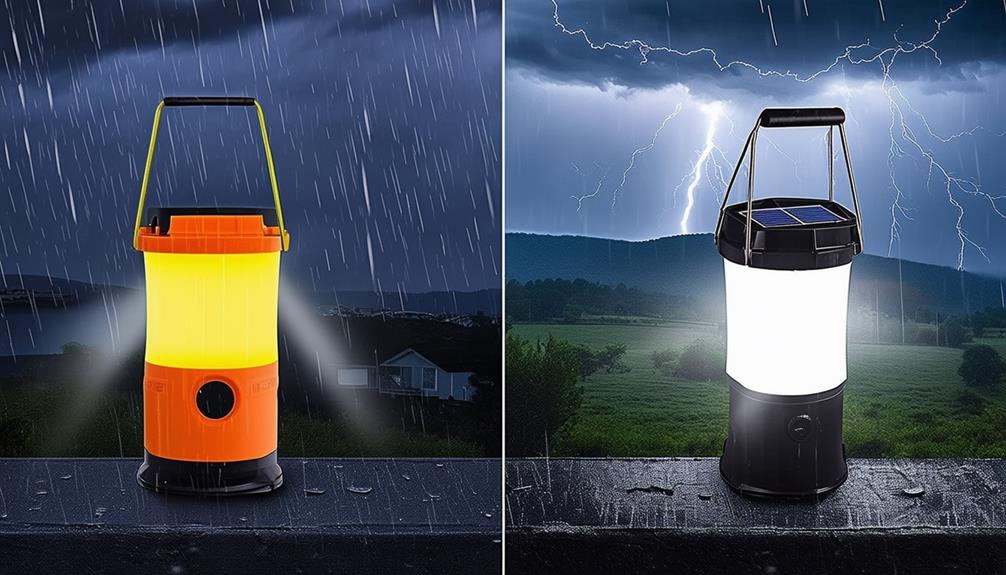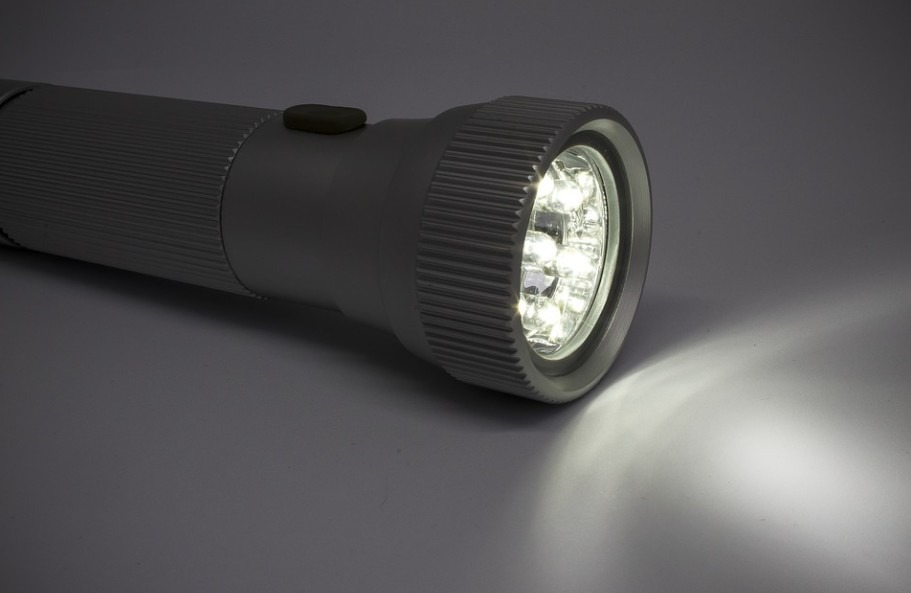Battery-Powered Vs. Solar-Powered Emergency Lights

When comparing battery-powered emergency lights to solar-powered ones, you'll notice distinct differences in energy sources and efficiency. Battery-powered lights rely on stored energy, needing regular replacements, which can become costly and environmentally taxing.
Conversely, solar-powered lights use renewable energy from the sun, offering a more sustainable and cost-effective alternative. However, installation and maintenance considerations might sway your decision.
Are solar-powered lights always the superior choice, or do battery-powered options offer unique advantages? Let's investigate this further to understand which type of emergency light suits your needs best.
Energy Sources and Efficiency

Choosing the appropriate energy source for emergency lights significantly impacts both efficiency and sustainability. Solar-powered lights utilize photovoltaic (PV) cells to convert sunlight into energy, which is stored in rechargeable batteries for later use. This method not only reduces your carbon footprint but also lowers long-term operational costs.
On the other hand, battery-powered lights depend on replaceable or rechargeable batteries. While they offer immediate lighting solutions, they lack long-term efficiency. Regular battery replacements lead to higher costs and increased environmental impact due to frequent disposal. Even rechargeable batteries need periodic replacement, contributing to waste and expenses.
Solar-powered lights, despite a higher initial investment, are more sustainable and cost-effective over time. They provide reliable, low-maintenance emergency lighting and reduce the need for frequent battery replacements, contributing to a greener environment.
For an emergency lighting option that combines high efficiency with low operational costs and a reduced carbon footprint, solar-powered lights are the optimal choice.
Installation and Maintenance
Proper installation and maintenance of emergency lights are crucial to ensure their reliable operation when needed. Solar-powered emergency lights are relatively easy to install, requiring no wiring—simply place them in a location that receives direct sunlight. Conversely, battery-powered lights may involve more complex installation due to potential wiring requirements.
Maintenance needs differ substantially between the two types. Solar-powered lights are low-maintenance, primarily requiring optimal placement to ensure adequate sunlight exposure. Keeping them free from shadows and debris is essential for peak performance, thereby making them an eco-friendly and sustainable option.
Battery-powered lights demand more frequent maintenance. Regular battery checks and replacements are necessary, which can be less convenient and potentially more expensive over time.
The choice between solar-powered and battery-powered emergency lights hinges on your maintenance preferences. Solar-powered lights provide a more sustainable and hassle-free experience if sufficient sunlight is available, whereas battery-powered lights are better suited for areas with limited direct sunlight.
Environmental Impact

Choosing solar-powered emergency lights offers significant environmental benefits. These lights rely on renewable solar energy, making them a sustainable option that reduces carbon emissions and lowers your ecological footprint.
By using solar energy, you support eco-friendly practices and clean energy sources essential for environmental protection. In contrast, battery-powered emergency lights contribute to environmental waste. Frequent battery replacements aren't only inconvenient but also harmful to the environment. Disposed batteries add to hazardous waste, polluting soil and water.
This ongoing need for new batteries increases your environmental impact, making battery-powered lights a less sustainable choice. Opting for solar-powered emergency lights means investing in a solution that doesn't depend on limited resources or generate harmful waste. Solar energy is abundant and clean, ensuring your lighting needs are met without compromising the planet's health.
Cost and ROI
When evaluating the cost and return on investment (ROI) of emergency lights, solar-powered options present clear long-term financial benefits despite their higher initial expense. While the upfront investment in solar-powered emergency lights may seem significant, the long-term cost savings make them a more economical choice overall.
Unlike battery-powered lights, solar-powered options don't require ongoing battery replacements, eliminating a considerable operational cost over time. The ROI for solar-powered emergency lights is primarily achieved through energy savings and reduced operational costs. Once installed, these lights utilize free solar energy, leading to lower electricity bills. This sustainable approach not only reduces costs but also supports environmental sustainability, promoting a greener future.
Performance and Reliability

Solar-powered emergency lights offer a more dependable and sustainable performance compared to their battery-powered counterparts. Utilizing renewable energy from the sun, these lights eliminate the need for frequent battery replacements, ensuring they're always ready during emergencies.
Conversely, battery-powered lights can be less reliable due to the need for regular maintenance and battery replacements, which can be particularly inconvenient during prolonged outages. If not properly maintained, their performance can degrade, potentially leaving you without light when it's most critical.
In contrast, solar-powered emergency lights provide a sustainable and consistent performance by harnessing solar energy. Designed to withstand various environmental conditions, they ensure long-term dependability without the ongoing need for new batteries.
When it comes to performance and reliability, solar-powered emergency lights clearly stand out. They offer a sustainable, reliable lighting solution that you can trust in any emergency scenario.
Conclusion
When deciding between battery-powered and solar-powered emergency lights, you'll find that solar-powered options are more sustainable and cost-effective. They utilize renewable energy, reducing carbon emissions and operational costs.
Unlike battery-powered lights, which require frequent replacements and maintenance, solar-powered lights offer reliable performance with minimal upkeep. By choosing solar-powered lights, you're making an eco-friendly and economically smart decision that ensures dependable emergency lighting while saving money in the long term.




